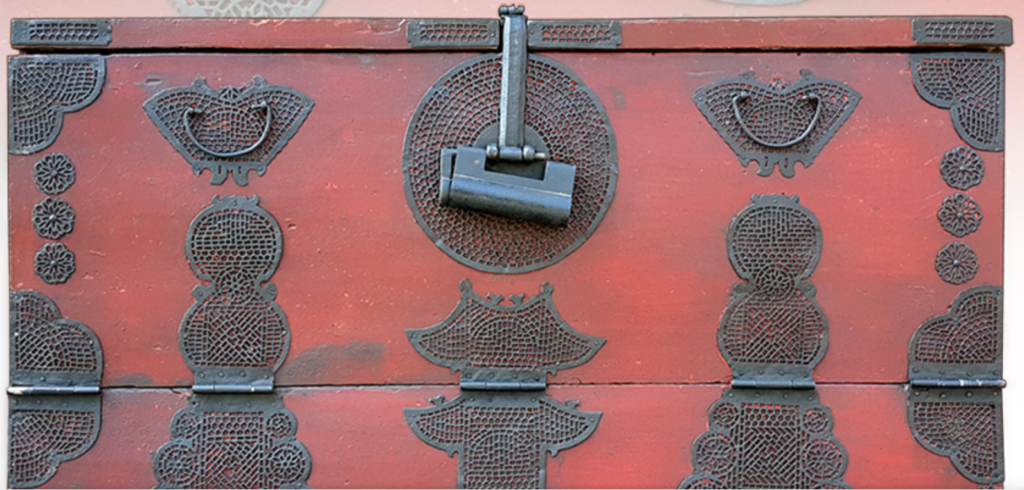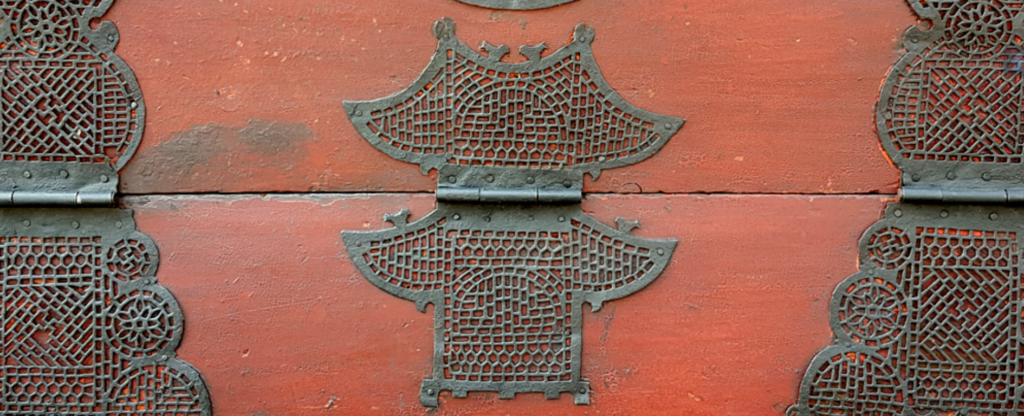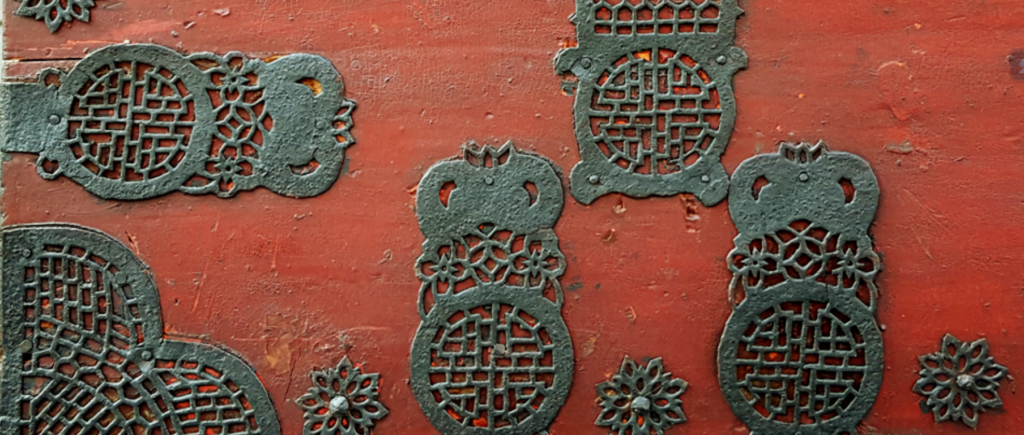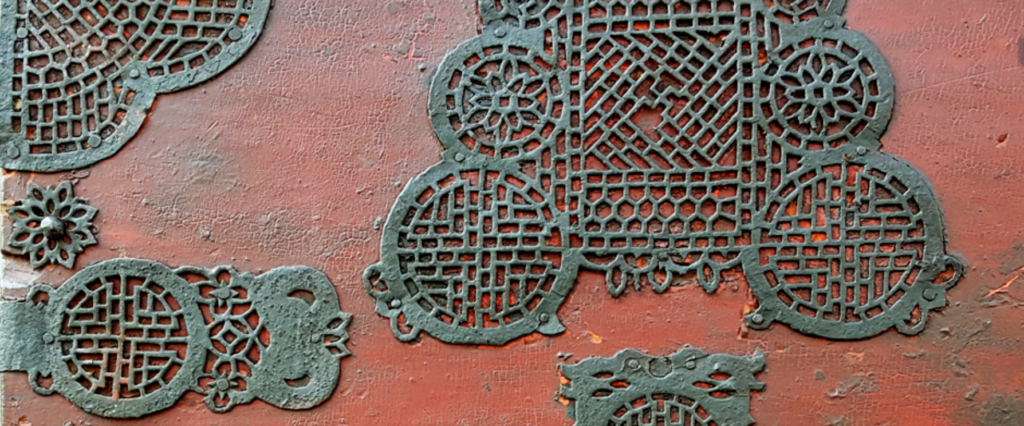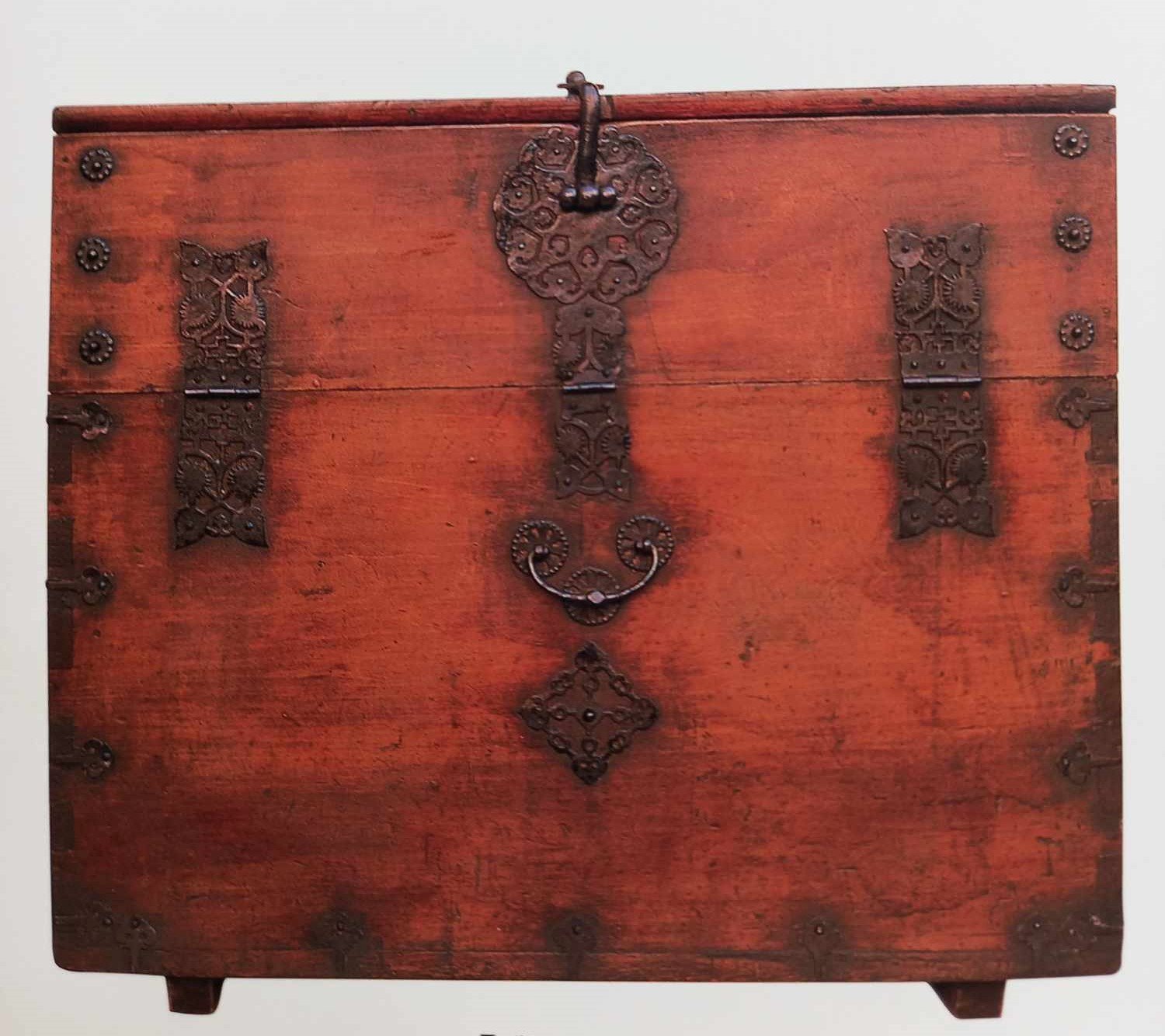Hwanghae Do province was located in the northwest of Korea. The provincial capital was Haeju. The regional name for the province was Haeseo.
In 1395, the province was organized as Punghae (풍해도; 豐海道; Punghae-do). In 1417, it was renamed Hwanghae. The name derived from the names of the two principal cities of Hwangju (황주; 黃州) and Haeju (해주; 海州).
In 1945, Korea was divided into Soviet and American zones of occupation, north and south respectively of the 38th parallel. The southernmost part of Hwanghae (around the towns of Ongjin and Yonan County) was cut off from the rest of the province by the dividing line and joined Gyeonggi Province in the southern half of the country. In 1948, Hwanghae and Gyeonggi Provinces became parts of the new countries of North and South Korea respectively.
Hwanghae was bounded by Pyongan Province (after 1896 South Pyongan) on the north, Gangwon Province on the east, Gyeonggi Province on the south, and the Yellow Sea on the west. (WIKIPEDIA).
Hwanghae-do has been an economically and culturally developed region from early days. Handicrafts such as Goryeo porcelain enabled Gaeseong, capital of the Goryeo Dynasty (918-1392) to develop thriving external trade and serve as a commercial center in both the Goryeo and Joseon eras.
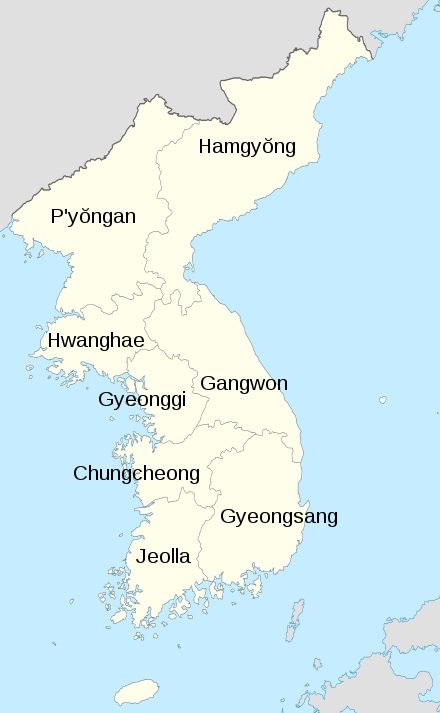
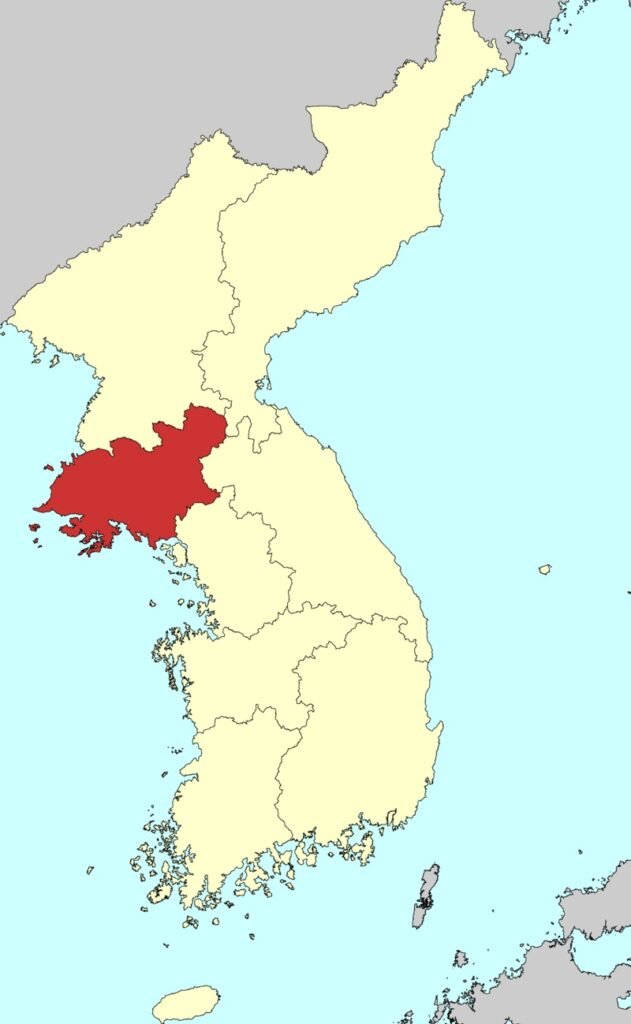
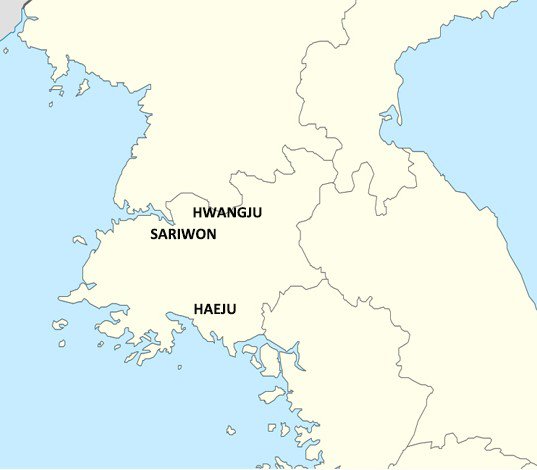
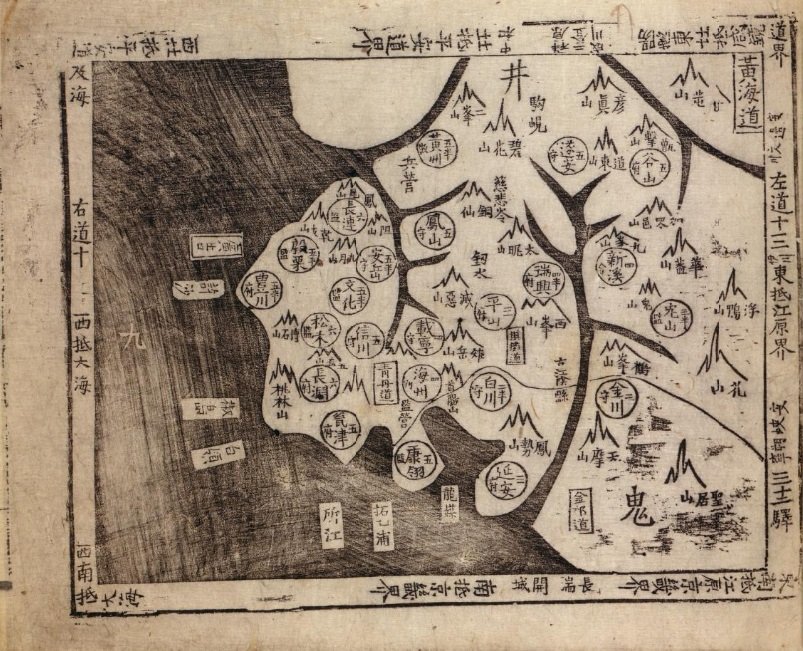
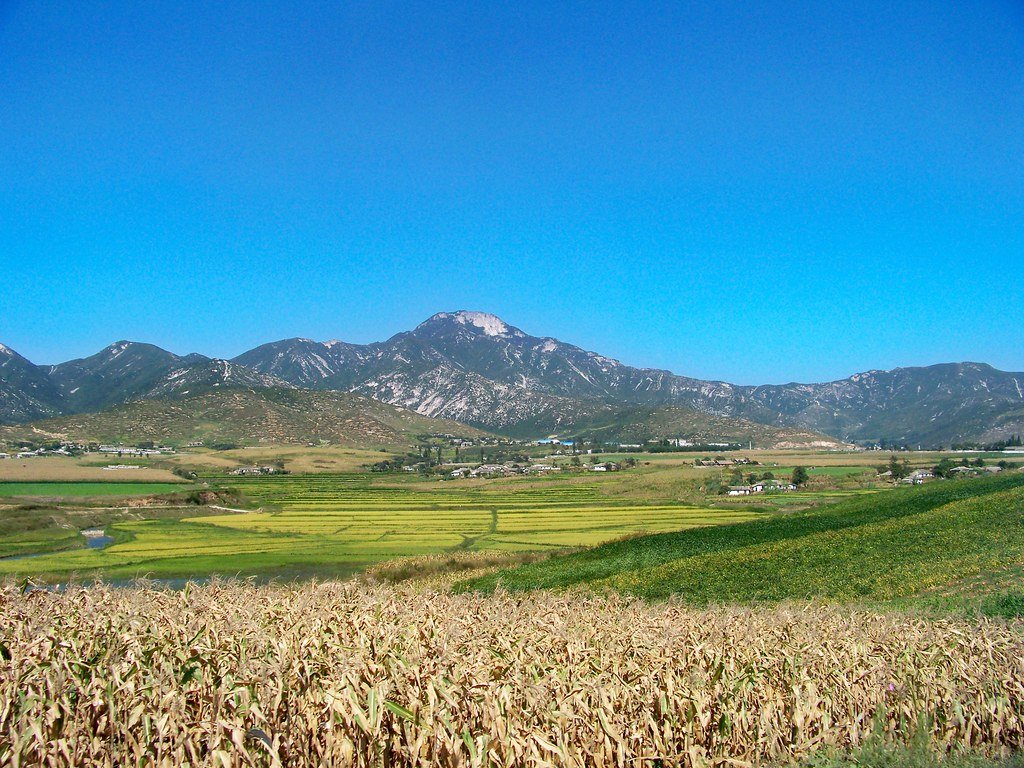
Regrettably, we lack information about the bandaji in this province. The only available documents, for the moment, come from pieces exhibited in museums in Korea (Sokcho City Museum in Gangwon Do province and the National Folk Art Museum in Gyeonggi Do province), as well as those found in Chung Dae-Yong’s work published in “Chests from the Chosun Dynasty” in 2008.
The bandaji exhibited in the Sokcho City museum has a very simple design without excessive decoration, which contrasts with those from the neighboring provinces. Crafted from pine wood, the front is adorned with wrought-iron hinges showcasing a flower-patterned design (door hinges) and a swallowtail motif lock plate, both without any engravings.
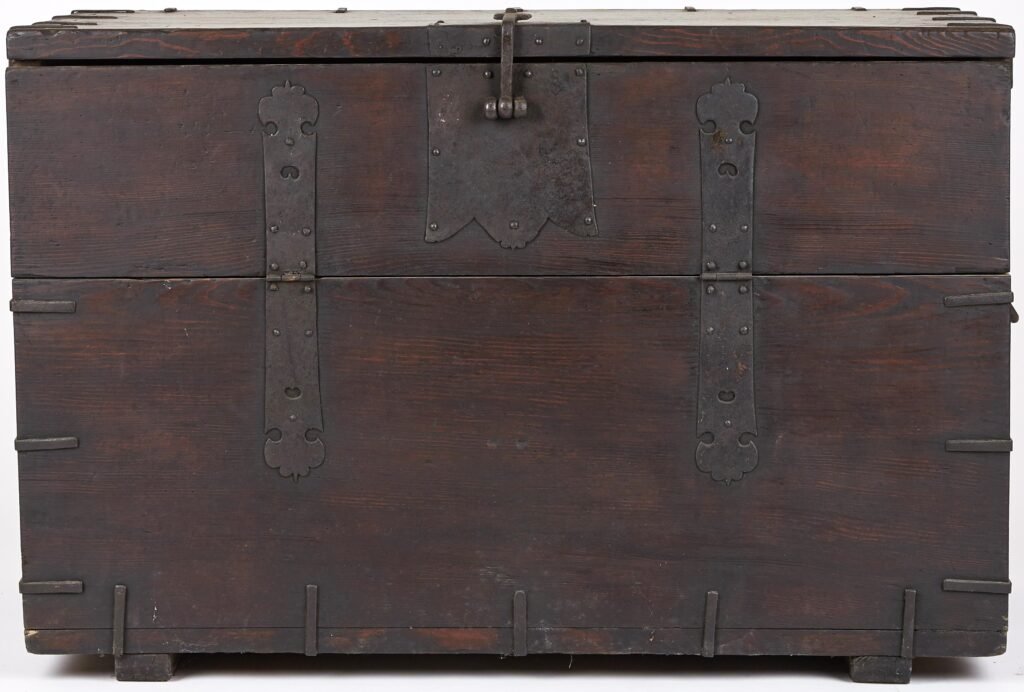
Chung Dae-Yong’s pieces, on the other hand, are more interesting because they allow us to discover new designs, notably in the treatment of decorative motifs on the hinges.
Most of the furniture featured in this post is made of linden and pine and comes in a variety of finishes, including natural, brown, or very dark.
These bandaji are generally large in size, a characteristic common in furniture from the northern provinces of the peninsula. Average dimensions are: H. 88cm, W. 95cm, D. 43cm.
It’s interesting to note the difference in style when compared with furniture from neighboring regions, such as Pyongan Do (Sung Sun I bandaji) and Ganghwa, both of which were also extensively adorned with metal hinges.
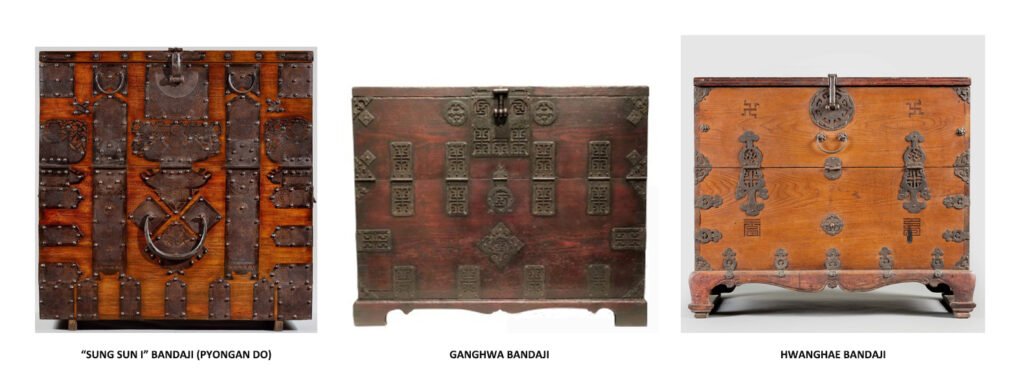
The bandaji known as ‘Sung Sun I’ is distinguished by the opulence of its hinges. Finely crafted, these hinges extensively cover the front of the furniture, often taking on rectangular or circular shapes. On the island of Ganghwa, the hinges, while still prevalent, are thicker and rectangular, featuring incised auspicious characters. In Hwanghae province, the number of hinges has decreased, and they tend to be more curved, symbolizing floral motifs.
The wrought-iron hinges are finely cut and feature a distinctive motif combining flowers and characters such as “Manja” or the Eight Trigrams pattern. Lock plates are often circular and intricately incised.
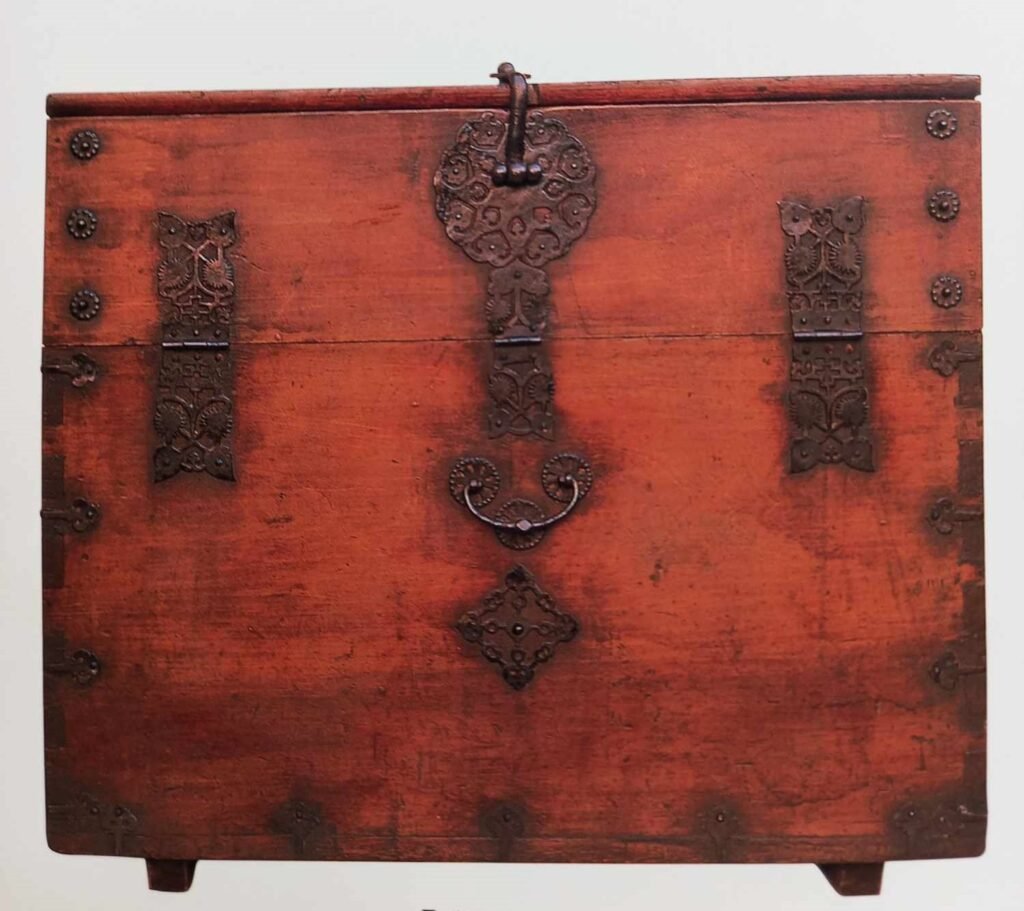
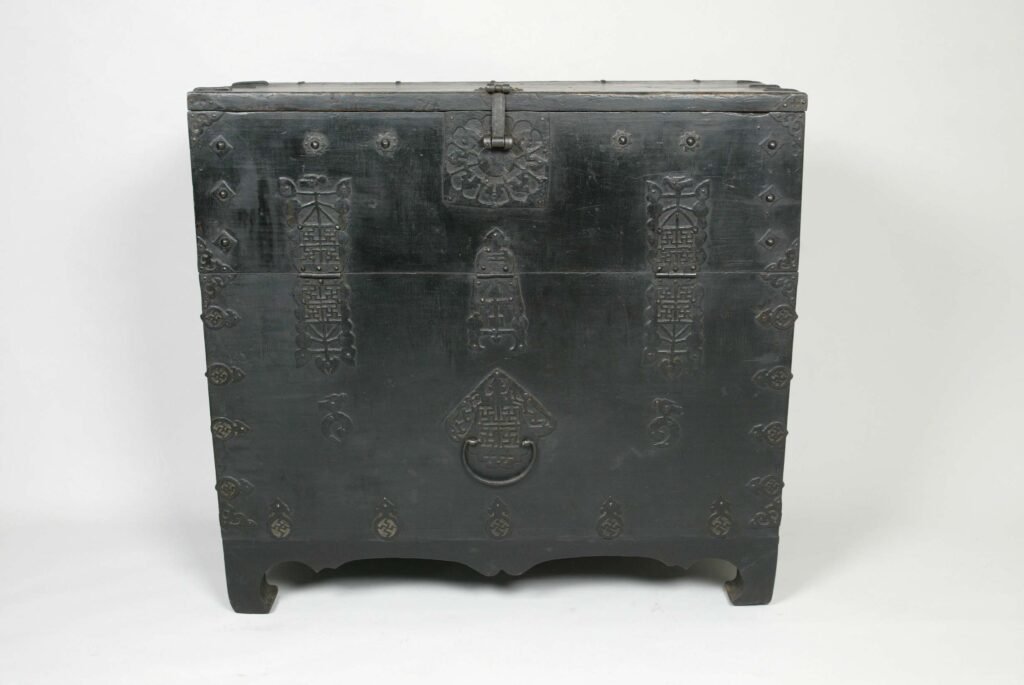
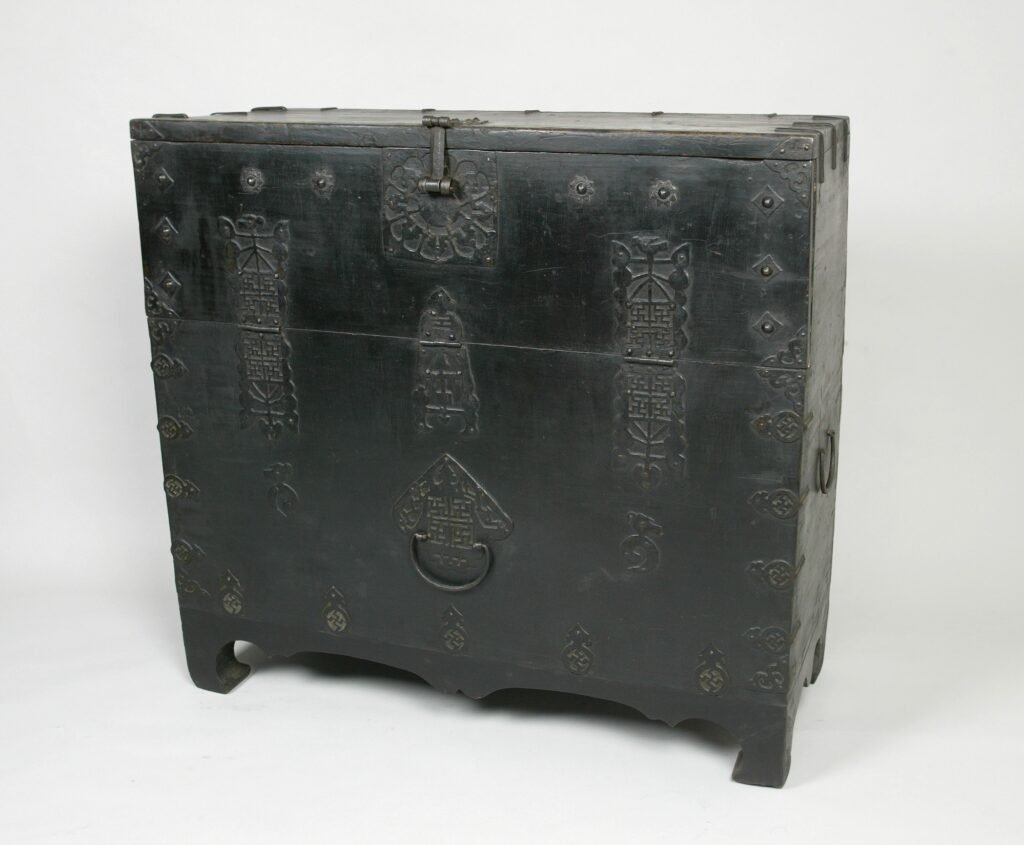
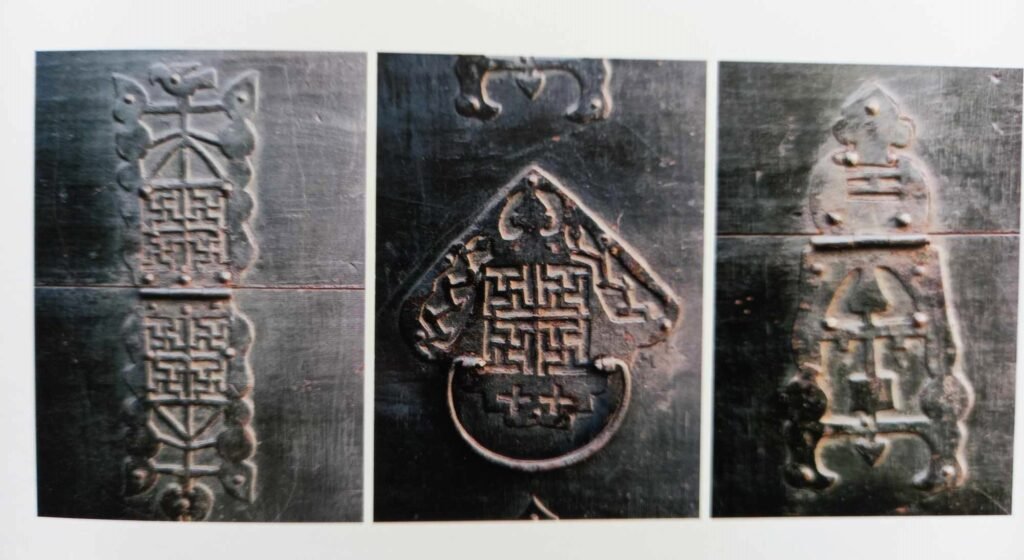
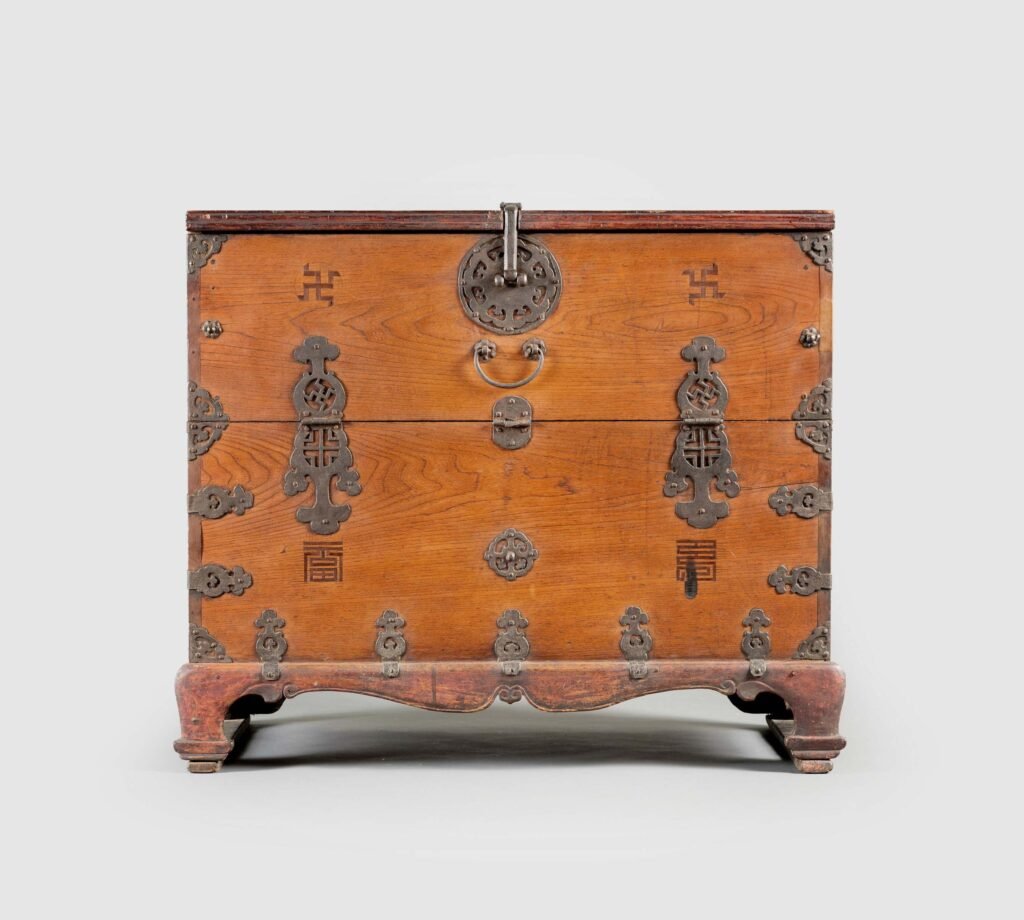
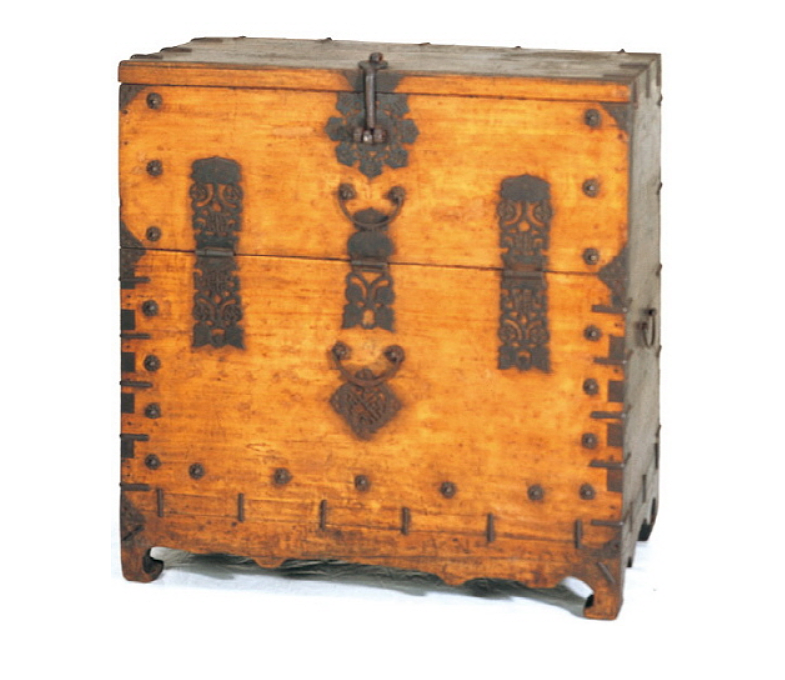
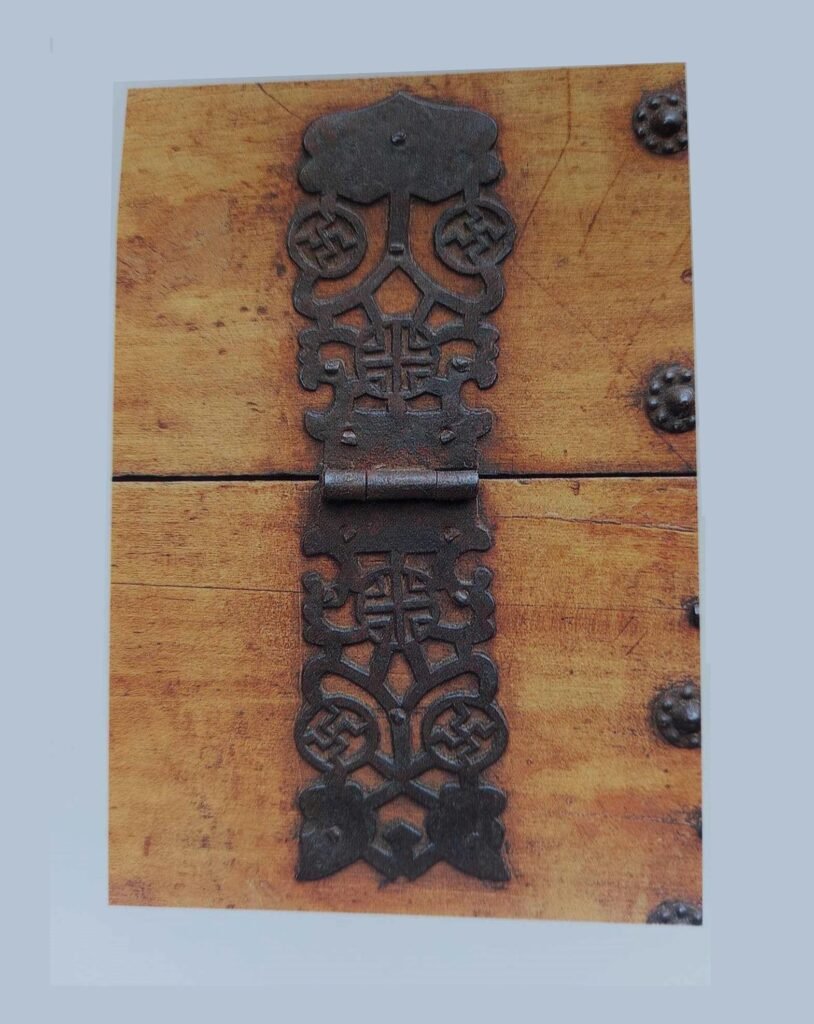
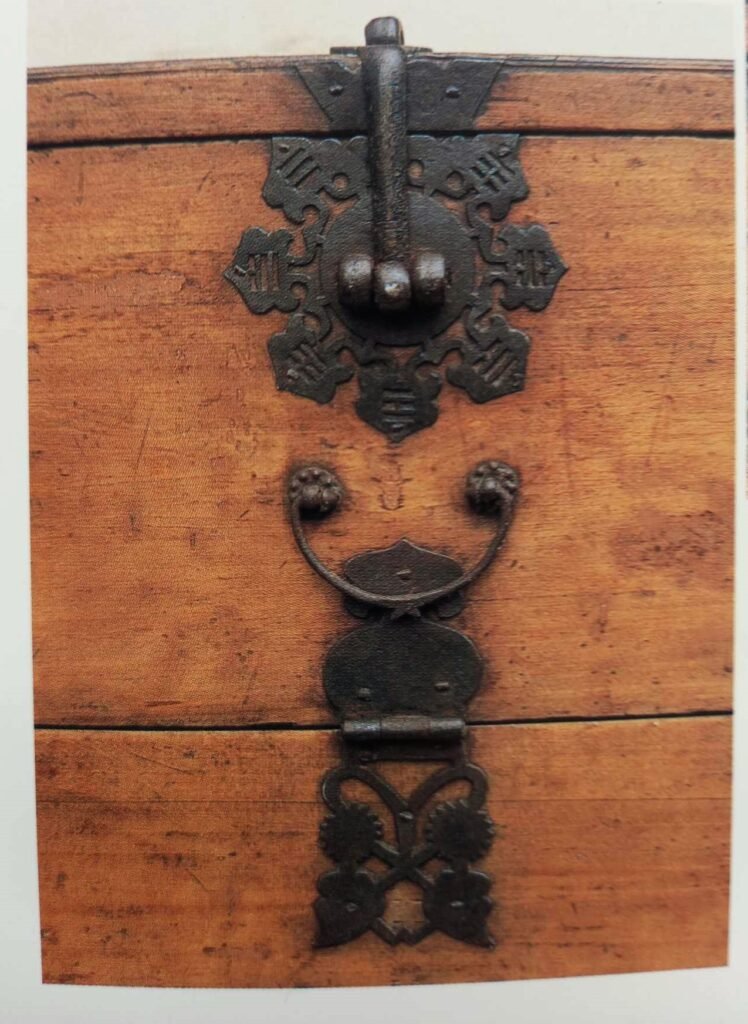
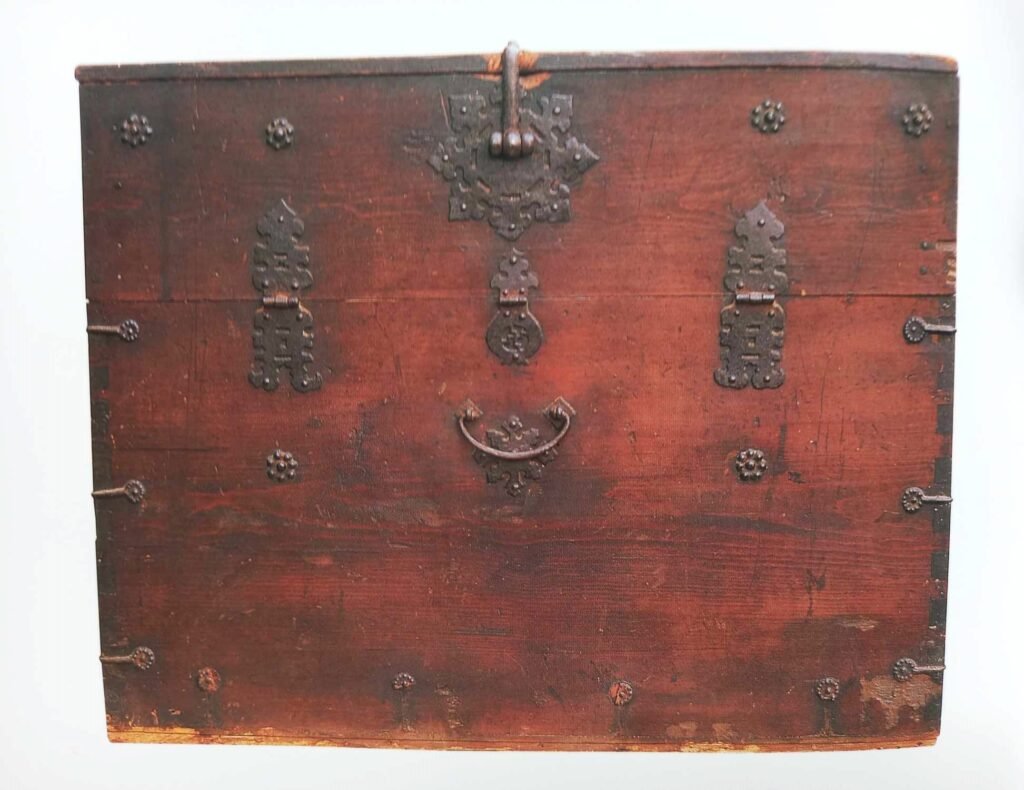
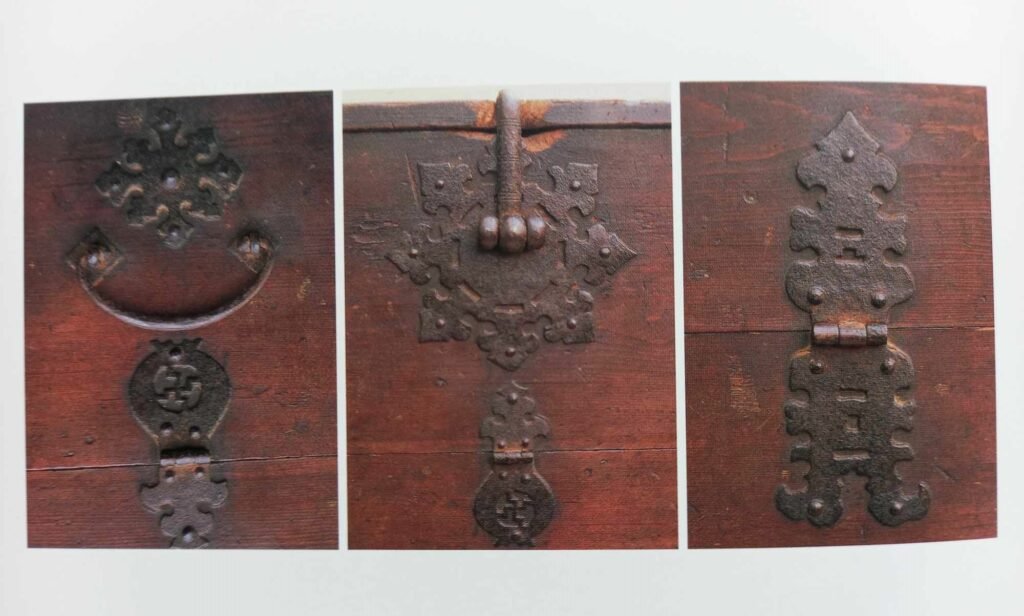
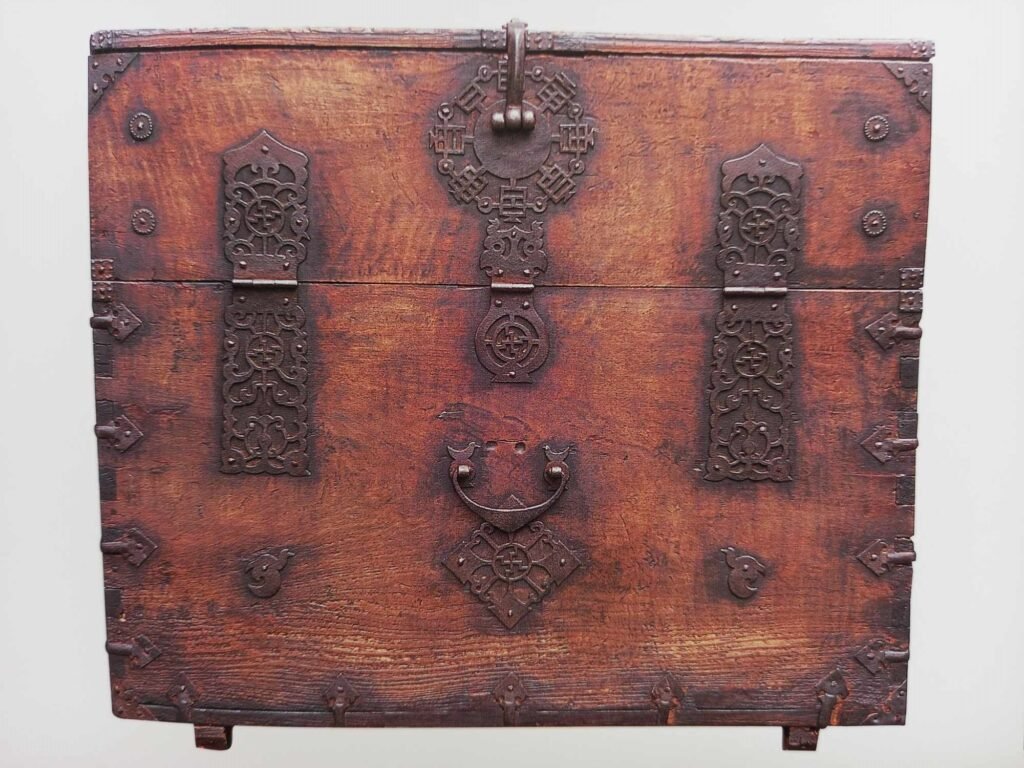
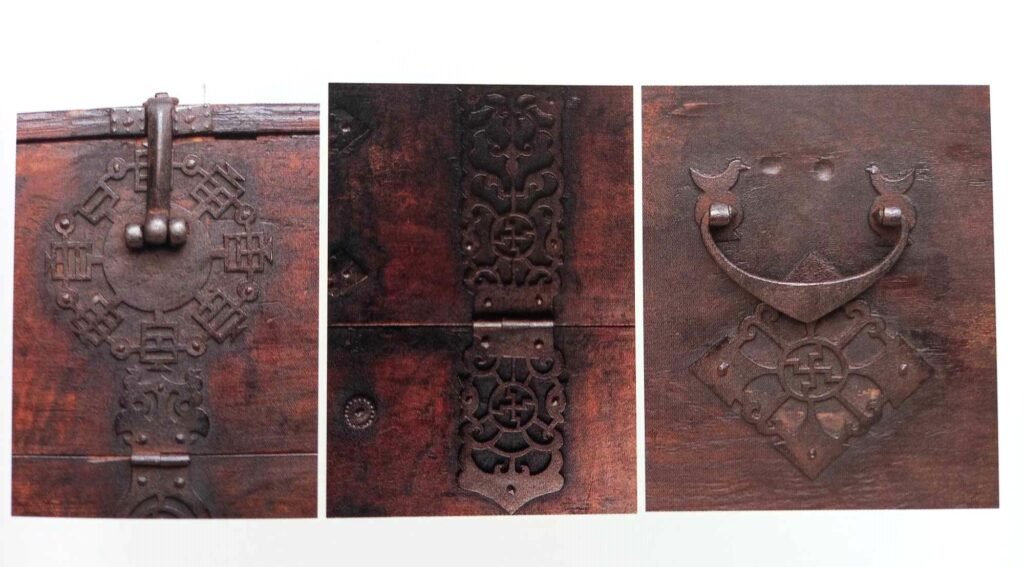
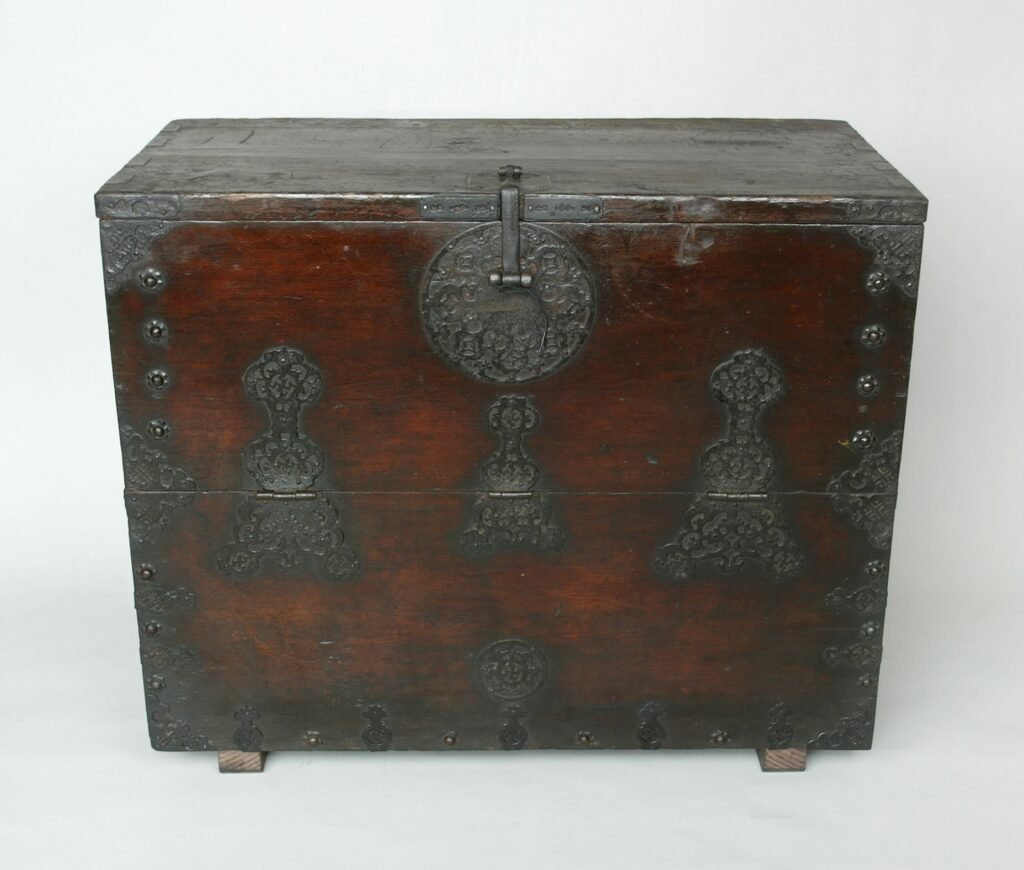
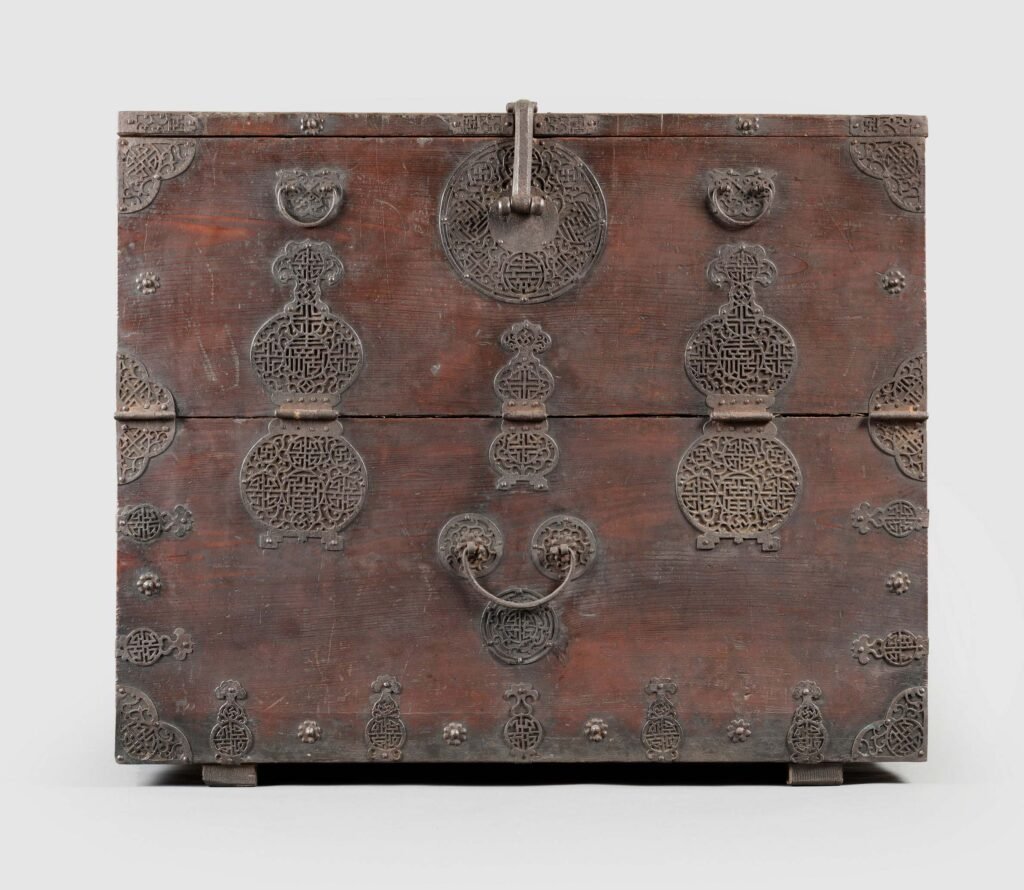
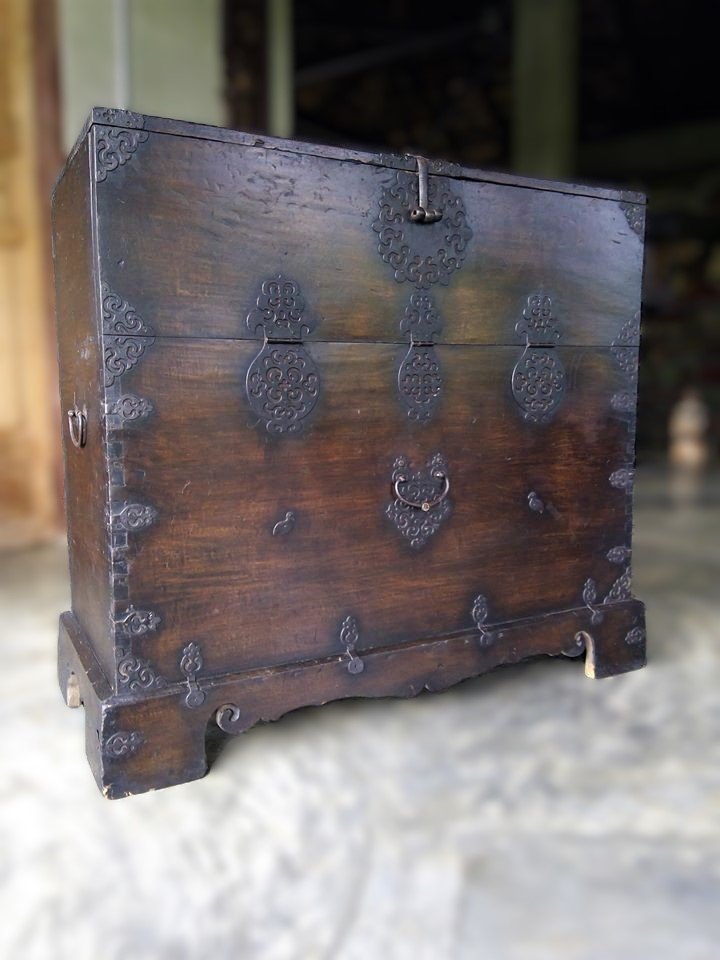
H. 85cm, W. 91cm, D. 42cm.
Early 20th century. Private collection.
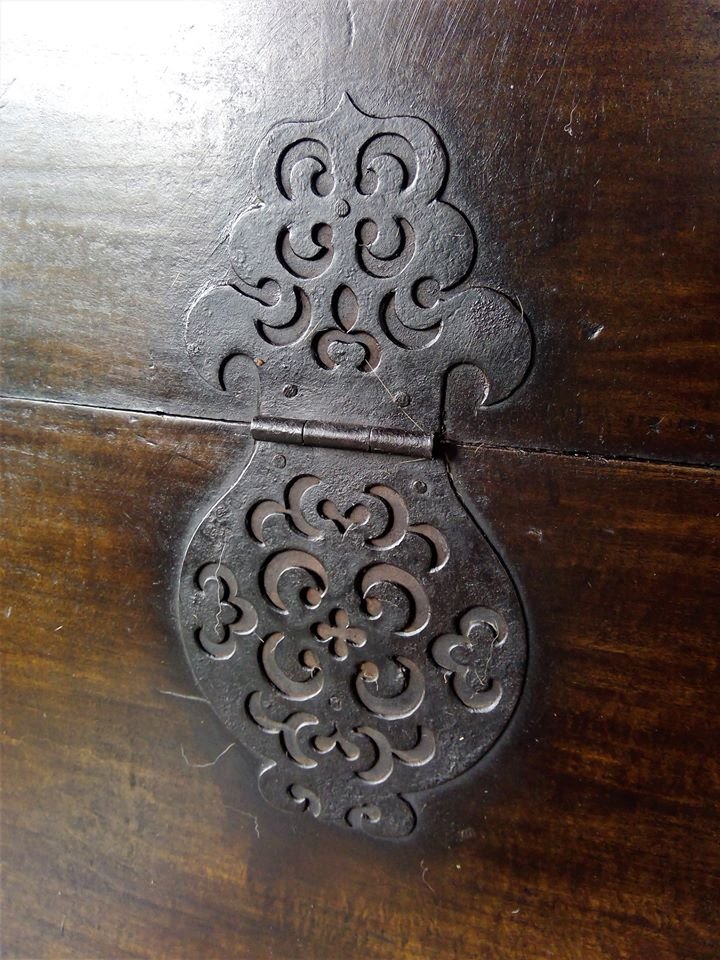
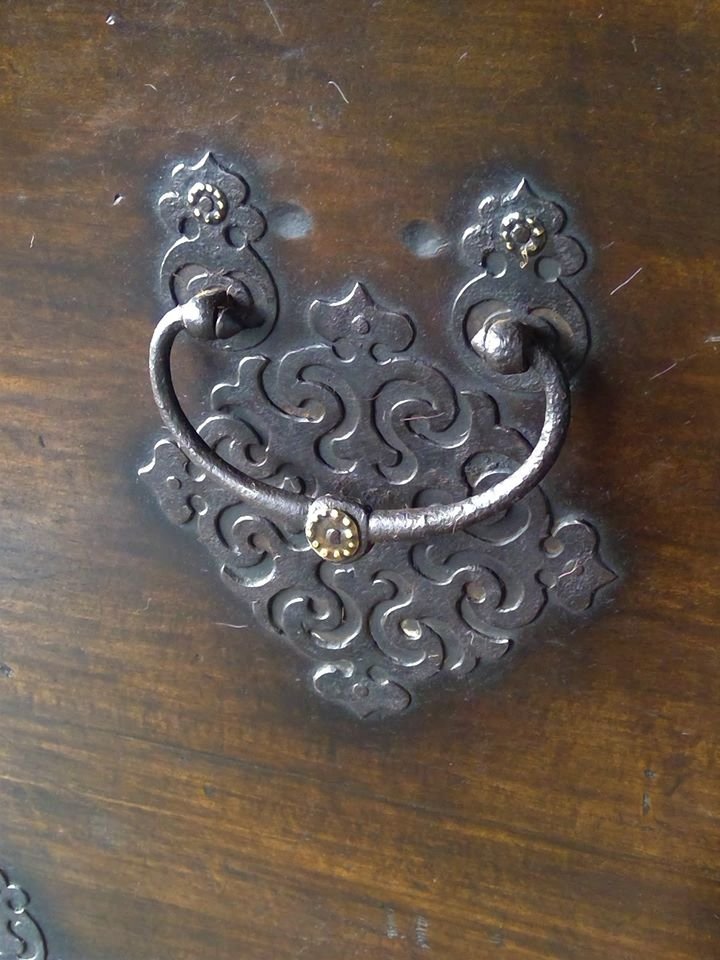
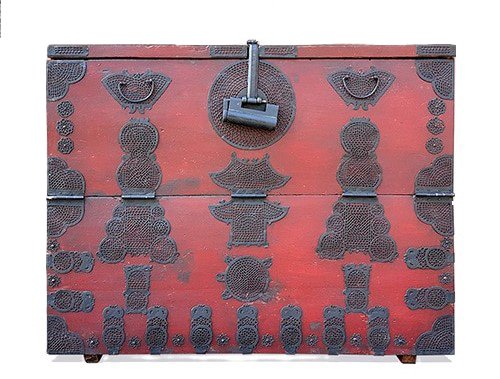
Red paint on pine wood, iron fittings.
H. 88cm, W. 113cm, D. 47cm.
Baengnyeongdo island.
Collection in Korea.
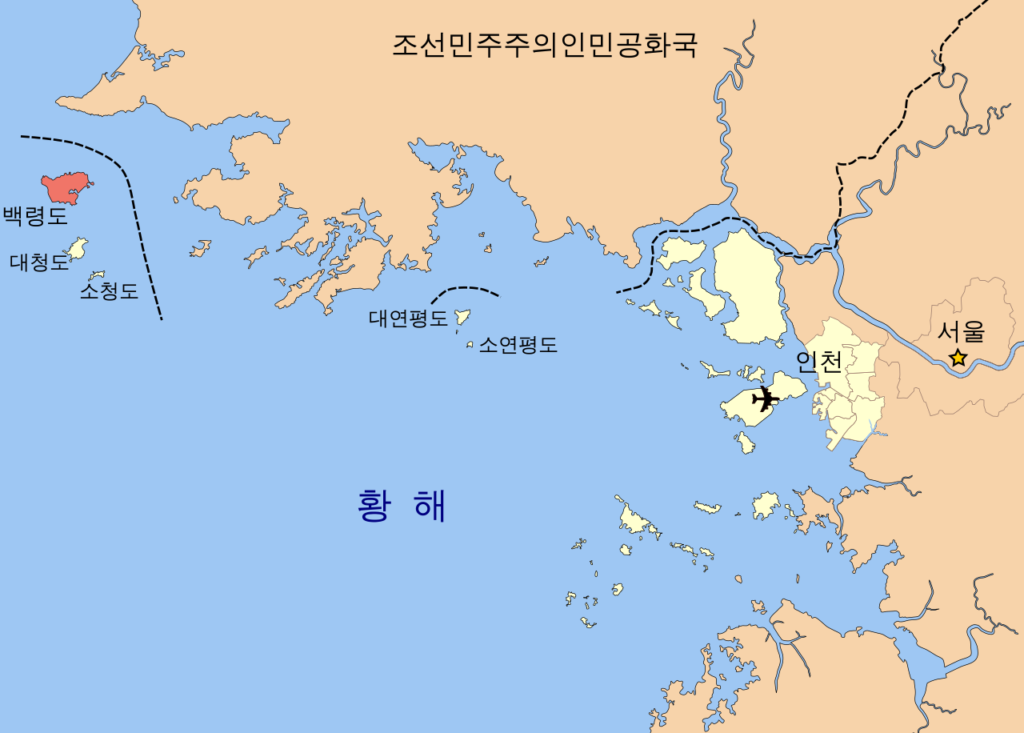
This island used to be part of Hwanghae province during the Joseon Dynasty.
